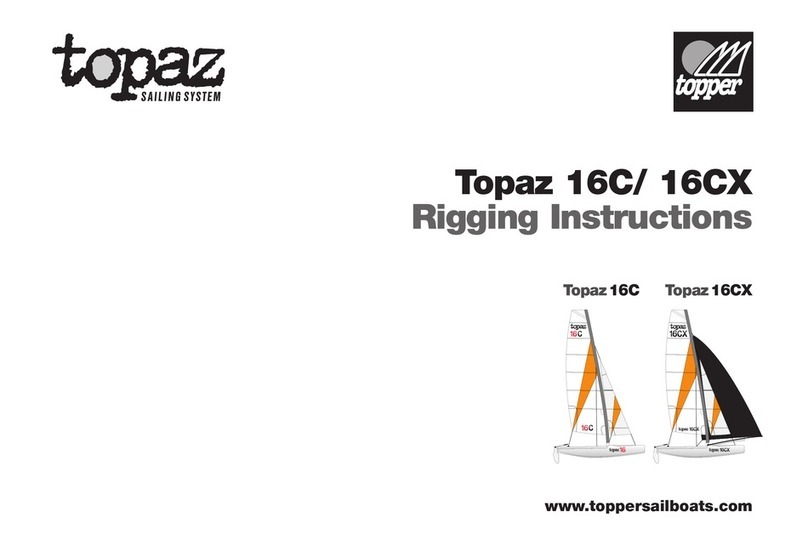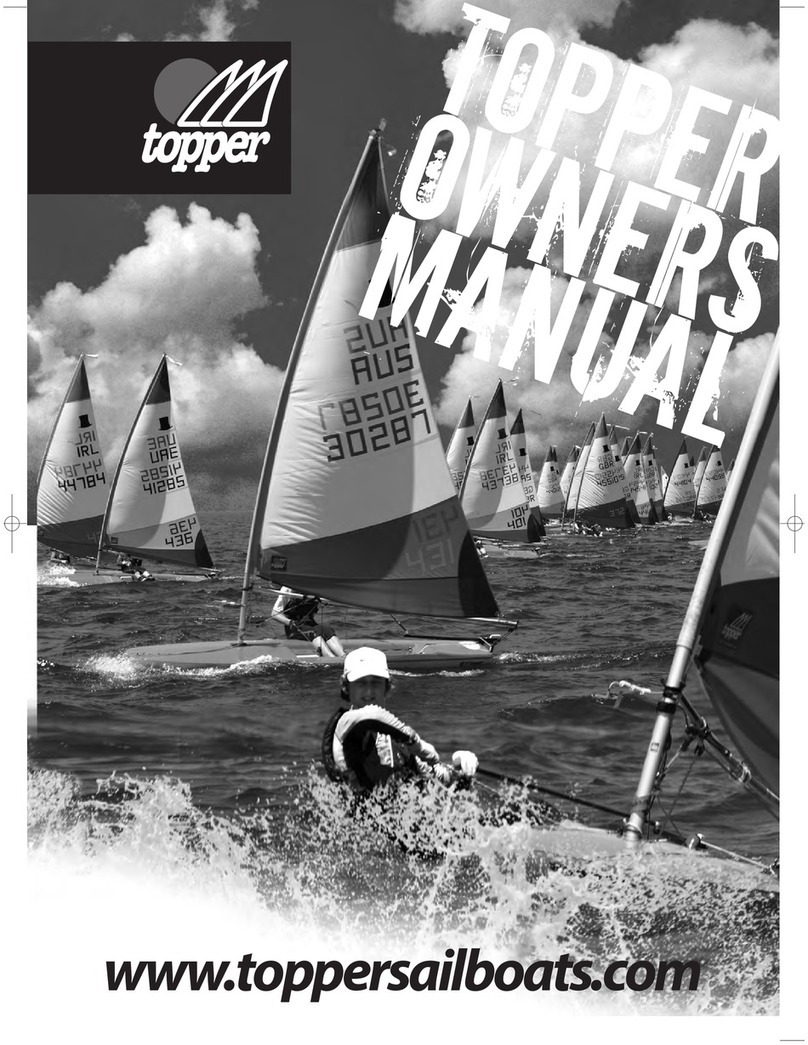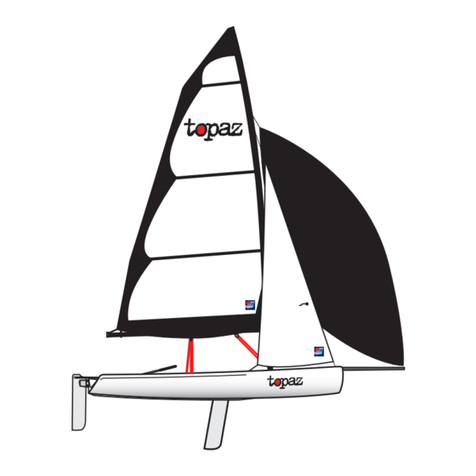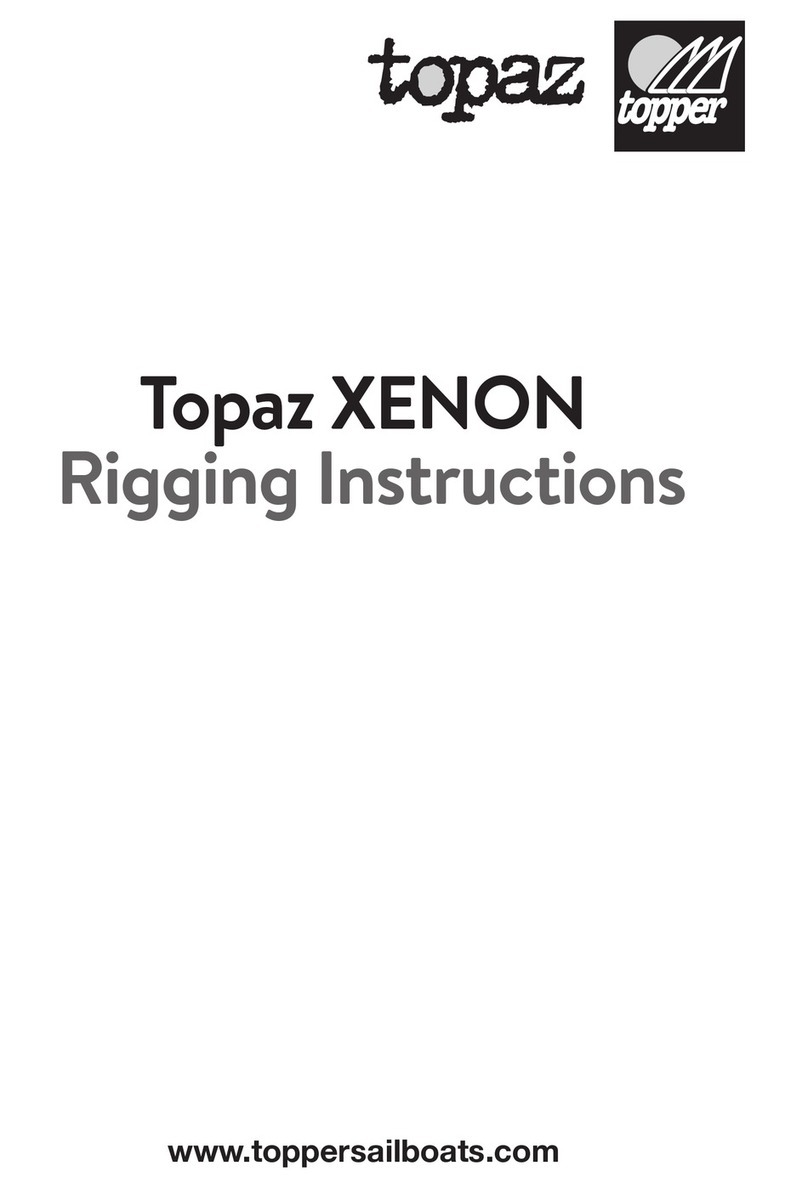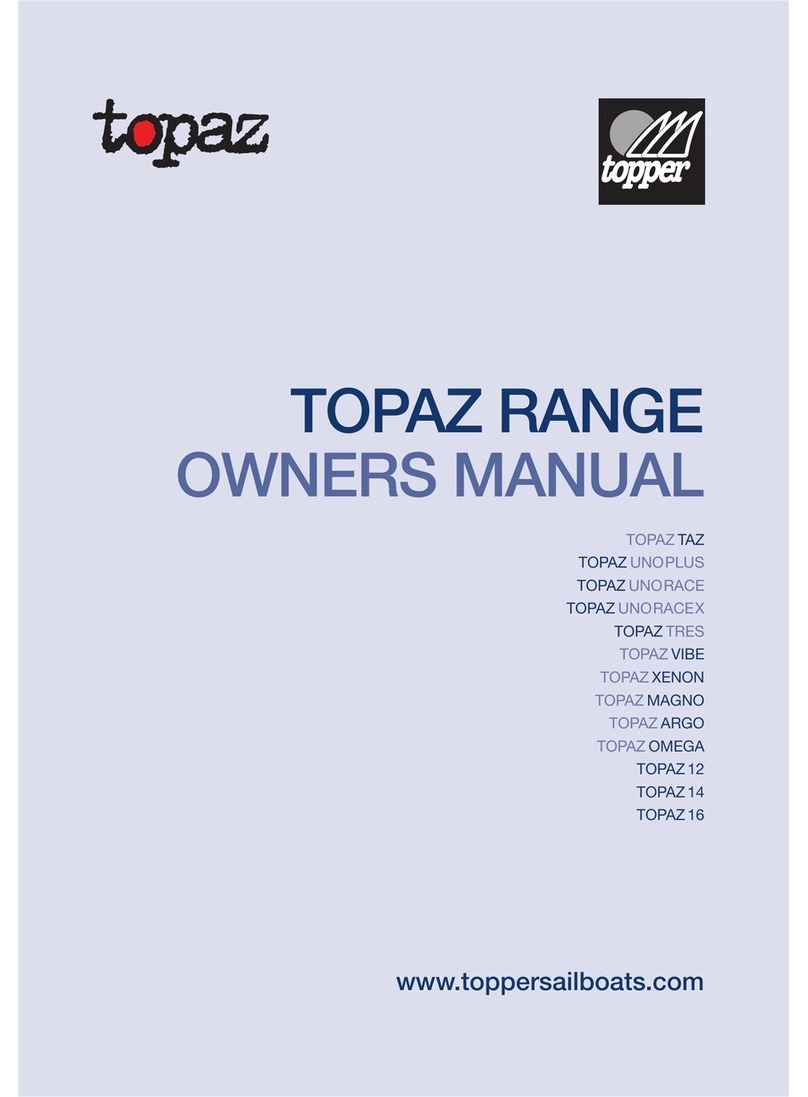
IMPORTANT SAFETY INFORMATION
ON THE WATER
• DANGER! Check for overhead cables when rigging,
launching and recovering (you should also check for
overhead cables when sailing). The mast sticks up a long
way and shock or death could result if it comes in contact
with overhead wires. So look up when moving the craft
around or even stepping the mast and give any wires
a wide berth.
• Conform to the sailing rules of the road.
• Look out for changing weather conditions.
• Never sail beyond your ability or that of your crew.
Ensure that you and your crew can cope with any
changes in the wind conditions.
• Understand and be competent in the sailing skills
and righting techniques.
The Topaz range of craft have been independently assessed
for stability and buoyancy by the RYA.
The RYA have assessed that the boat can be righted
by the crew and will subsequently float.
The stability and buoyancy have been certified by an EU
Notified Body, HPi Verification Services.
The Topaz range of craft are particularly stable, but a capsize
is always a possibility, even when used with care and even
in light conditions. It is therefore essential that you should
familiarise yourself and practice capsize recovery when
you first sail the boat, ideally in an area where there is some
kind of safety patrol to assist you should you get into difficulty.
Minimum crew weight required for righting:
TAZ 40kgs
TOPAZ 50kgs
VIBE 65kgs
XENON 80kgs
MAGNO 70kgs
ARGO 60kgs
OMEGA 80kgs
TOPAZ 12 60kgs
TOPAZ 14 70kgs
TOPAZ 16 75kgs
The mainsheet should be uncleated and make sure that it will
run freely when the boat is righted.
The gnav/kicker should be eased to de-power the top
of the mainsail.
If the craft inverts it should be pulled onto its side so that
the rig is horizontal to the water. It sometimes helps to pull
it up with the aid of the wind blowing over the deck and rig.
If your boat has an asymmetric spinnaker and it was up when
the craft capsized, it should be lowered into the chute by a
member of the crew.
Then there are two basic situations to recover from:
- When the rig is lying in the water, pointing downwind.
- When the rig is lying in the water, pointing upwind.
Climb onto the daggerboard and pull the boat slowly upright
using the mainsheet or asymmetric sheet if applicable.
As the craft gets to 45 degrees one of the crew should climb
on. As the boat continues to right take the tiller so that as
the boat returns to its normal orientation you are in control
of the boat as soon as possible. Once you are in control,
you can sort yourself out, tidy the craft and get sailing again.
This is quite often the position the boat ends up in.
Climb onto the daggerboard/ centreboard. As you begin to right
the boat, the wind will blow under the mainsail and help you
right it. Depending on the wind strength the boat will right at
different rates. If the wind is strong the faster you will have to
move. As the mast leaves the water, one of you should climb
aboard and get to the windward side to prevent the boat
capsizing again. Should the boat capsize again to the other
side, simply climb over on to the daggerboard and follow
the procedure for the rig pointing downwind.
In case of difficulty, always remain with your boat. Never be
tempted to leave your boat to go to the shore. Wait for rescue
The boats are equipped with a combination of deck and bow
handles on the Taz and Topaz, or righting lines on the Vibe,
Xenon, Magno, Argo and Omega. These, or the shrouds,
can be used to assist recovery of a man overboard
or a reboarding of the boat. The transom of the boats
are also open to allow easy reboarding.
It is advisable to reboard the boat from the windward side
when climbing aboard via the gunwale.
4





